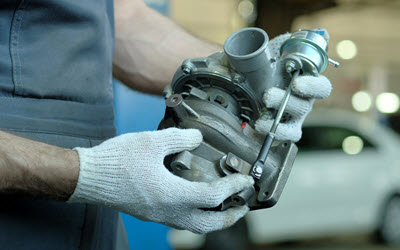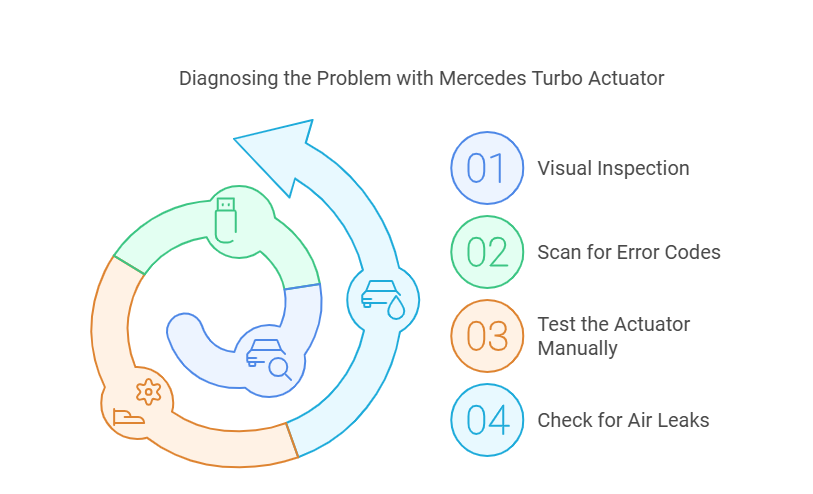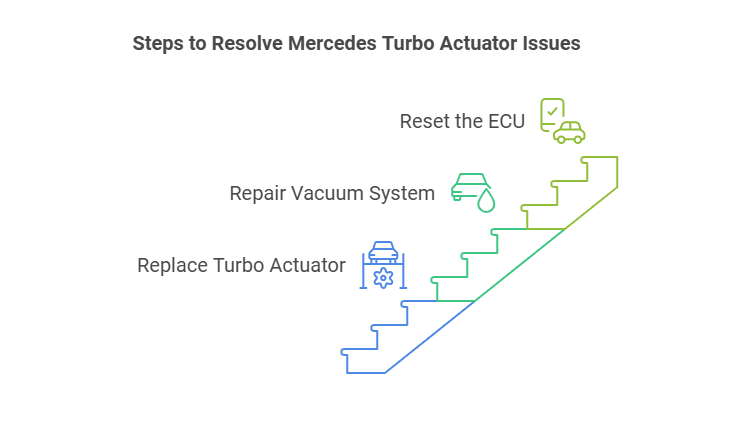Does your Mercedes lack power when you push the gas pedal? If so, your turbo actuator may be having issues. Being an important mechanism in regulating boost pressure to your engine, the turbo actuator has a severe impact on your Mercedes performance when it is faulty. Here are steps you can take to diagnose or fix a faulty turbo actuator.
What is a Turbo Actuator?
A turbo actuator is a relatively small component that plays the role of adjusting the position of the wastegate within the turbocharged engine. Wastegate helps to control the exhaust gas flow into the turbocharger and this determines the amount of boost pressure that is produced.
The actuator forces the wastegate to open and close relative to the demand of the engine and increases the power of the vehicle where there is demand such as during acceleration. If the turbo actuator isn’t working properly, the turbocharger won’t produce enough boost, meaning you may not get all the power you need or the engine may not run as well as it should.
Diagnosing the Problem with Mercedes Turbo Actuator
- Visual Inspection: One of the easiest methods that can be used to determine the state of the turbo actuator is the direct observation of the part. It is usually mounted on the turbocharger, so begin by finding where the actuator is located. When you find it, check for signs of wear and tear, for instance, rust, cracks, or signs of a loose connection in the wiring. Closely examine the actuator arm and linkage assembly because these parts can easily wear out or develop some misalignment.
- Scan for Error Codes: Today’s cars have onboard diagnostic (OBD) systems, which are capable of storing error codes for different parts. Sometimes, using an OBD scanner would tell you whether there is a problem with the turbo actuator or not. Check for any boost pressure-related errors or even any turbocharger performance-related errors. You might come across codes like P003A or P0046. These codes can help you to know where to look for further details.
- Test the Actuator Manually: If you are okay with handling mechanical things, you can decide to check the functionality of the turbo actuator by testing it manually. Remove the wastegate from the actuator and shake it with your hands. The actuator arm should be without friction and should glide without any effort. If it is rigid, remains fixed in position, or is totally immobile, then there is a high likelihood that the actuator is spoilt and should be replaced.
- Check for Air Leaks: There is always a hissing or whistling noise that shows an air leak in the turbo system. To check for leakage soapy water should be applied to the turbo actuator area and hoses fitted to it. If bubbles are created, it implies that there is an air leak in the system which is undesirable for the turbo actuator and the remaining turbo system.
How To Solve Turbo Actuator Problems
- Replace Turbo Actuator: If the turbo actuator is found to be bad it will have to be replaced. This is sometimes the most efficient solution because an actuator that is worn out cannot be rebuilt. When replacing them, be sure to use high-quality, OEM parts so that they work as they should for a long time.
- Repair Vacuum System: If the problem is as a result of a vacuum leak, merely repairing or replacing the faulty vacuum line should solve the problem. Sometimes it may be necessary to check the condition of the vacuum pump for any signs of malfunction.
- Reset the ECU: After the replacement of the turbo actuator, you may require the car’s engine control unit (ECU) to be reset in order to delete the code and ensure the optimum performance of the car. This can be achieved with the help of a diagnostic scanner.
Come to Das European Autohaus for Your Mercedes’ Turbo Actuator Repair Needs
Here at Das European Autohaus,  we’re experts in diagnosing and fixing Mercedes turbo actuator issues. Our team of certified technicians has the experience necessary to get your Mercedes back to running like new. We are well-positioned to serve Mercedes drivers in and around Spring, Houston, TX. If you feel a lack of power, unusual noises, or other symptoms that suggest a problem with the turbo actuator, don’t think twice. Schedule an appointment with us today to keep your Mercedes running happily and efficiently.
we’re experts in diagnosing and fixing Mercedes turbo actuator issues. Our team of certified technicians has the experience necessary to get your Mercedes back to running like new. We are well-positioned to serve Mercedes drivers in and around Spring, Houston, TX. If you feel a lack of power, unusual noises, or other symptoms that suggest a problem with the turbo actuator, don’t think twice. Schedule an appointment with us today to keep your Mercedes running happily and efficiently.



